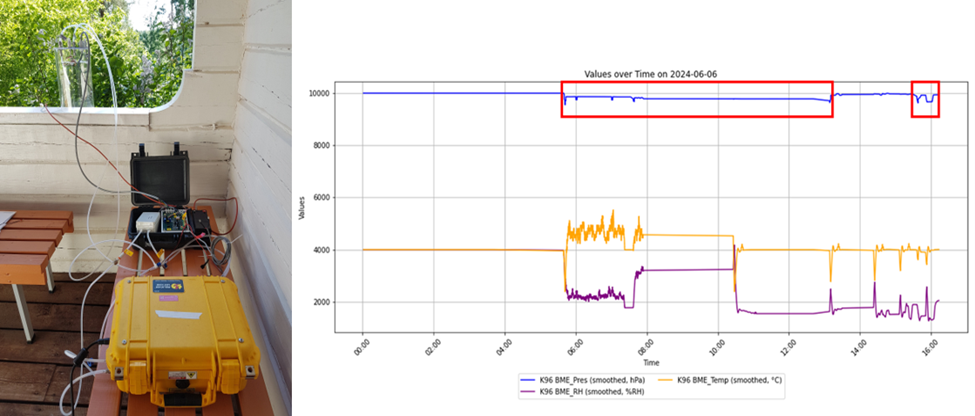The 𝐌𝐈𝐒𝐎 𝐢𝐧-𝐬𝐢𝐭𝐮 monitoring platform takes a significant step forward with the Gas Flux Chamber, a key component designed for 𝐝𝐢𝐫𝐞𝐜𝐭-𝐬𝐨𝐮𝐫𝐜𝐞 𝐦𝐞𝐚𝐬𝐮𝐫𝐞𝐦𝐞𝐧𝐭𝐬 𝐨𝐟 𝐂𝐇₄ 𝐚𝐧𝐝 𝐂𝐎₂. The 𝐀𝐥𝐟𝐫𝐞𝐝 𝐖𝐞𝐠𝐞𝐧𝐞𝐫 𝐈𝐧𝐬𝐭𝐢𝐭𝐮𝐭𝐞, 𝐇𝐞𝐥𝐦𝐡𝐨𝐥𝐭𝐳 𝐂𝐞𝐧𝐭𝐫𝐞 𝐟𝐨𝐫 𝐏𝐨𝐥𝐚𝐫 𝐚𝐧𝐝 𝐌𝐚𝐫𝐢𝐧𝐞 𝐑𝐞𝐬𝐞𝐚𝐫𝐜𝐡 team, led by 𝐃𝐫. 𝐋𝐨𝐧𝐚 𝐯𝐚𝐧 𝐃𝐞𝐥𝐝𝐞𝐧 other partners, is pushing beyond the state-of-the-art by developing cost-efficient and robust Gas Flux Chambers that optimize capital cost, deployment, recovery, and maintenance. These innovations enable deployment in remote locations, improving geographical coverage and supporting long-term in-situ environmental observations.
By the end of 2024, AWI released the first prototype of gas flux chambers for accurate GHG measurements in hard-to-reach areas. In this prototype, 𝐒𝐞𝐧𝐬𝐞𝐚𝐢𝐫 (𝐁𝐞𝐧𝐨𝐢𝐭 𝐖𝐚𝐬𝐭𝐢𝐧𝐞 and 𝐁𝐚𝐤𝐡𝐫𝐚𝐦 𝐆𝐚𝐲𝐧𝐮𝐥𝐥𝐢𝐧) contributed by optimizing the sensing module based on K96, while 𝐍𝐈𝐋𝐔 (𝐓𝐨𝐫𝐛𝐣ø𝐫𝐧 𝐇𝐞𝐥𝐭𝐧𝐞) developed the motherboard for control, data acquisition, and communication. The prototype has already been tested in real conditions, with Figure 2 illustrating the gas flux chamber setup for ambient readings overnight in outdoor conditions. The image highlights temperature and pressure dynamics during the day-night cycle, with the reference analyzer placed in-line with the MISO sensor, causing a pressure decrease due to faster sample flow out of the temperature-controlled unit than in. With promising results, 10 assembled units of the MISO Gas Flux Chamber are now ready for deployment, supporting both manual and automated flux measurements. This advancement marks a significant step in enhancing greenhouse gas monitoring and expanding in-situ observation capabilities. Stay tuned for more updates!












